
Athletic apparel brand Nike (NYSE: NKE) announced better-than-expected revenue in Q3 CY2025, with sales up 1.1% year on year to $11.72 billion. Its GAAP profit of $0.49 per share was 84.5% above analysts’ consensus estimates.
Is now the time to buy Nike? Find out by accessing our full research report, it’s free.
Nike (NKE) Q3 CY2025 Highlights:
- Revenue: $11.72 billion vs analyst estimates of $11 billion (1.1% year-on-year growth, 6.5% beat)
- EPS (GAAP): $0.49 vs analyst estimates of $0.27 (84.5% beat)
- Operating Margin: 7.7%, down from 10.4% in the same quarter last year
- Constant Currency Revenue fell 1% year on year (-9% in the same quarter last year)
- Market Capitalization: $102.7 billion
“This quarter NIKE drove progress through our Win Now actions in our priority areas of North America, Wholesale, and Running,” said Elliott Hill, President & CEO, NIKE, Inc.
Company Overview
Originally selling Japanese Onitsuka Tiger sneakers as Blue Ribbon Sports, Nike (NYSE: NKE) is a global titan in athletic footwear, apparel, equipment, and accessories.
Revenue Growth
Reviewing a company’s long-term sales performance reveals insights into its quality. Any business can have short-term success, but a top-tier one grows for years. Unfortunately, Nike’s 4.5% annualized revenue growth over the last five years was sluggish. This fell short of our benchmark for the consumer discretionary sector and is a rough starting point for our analysis.
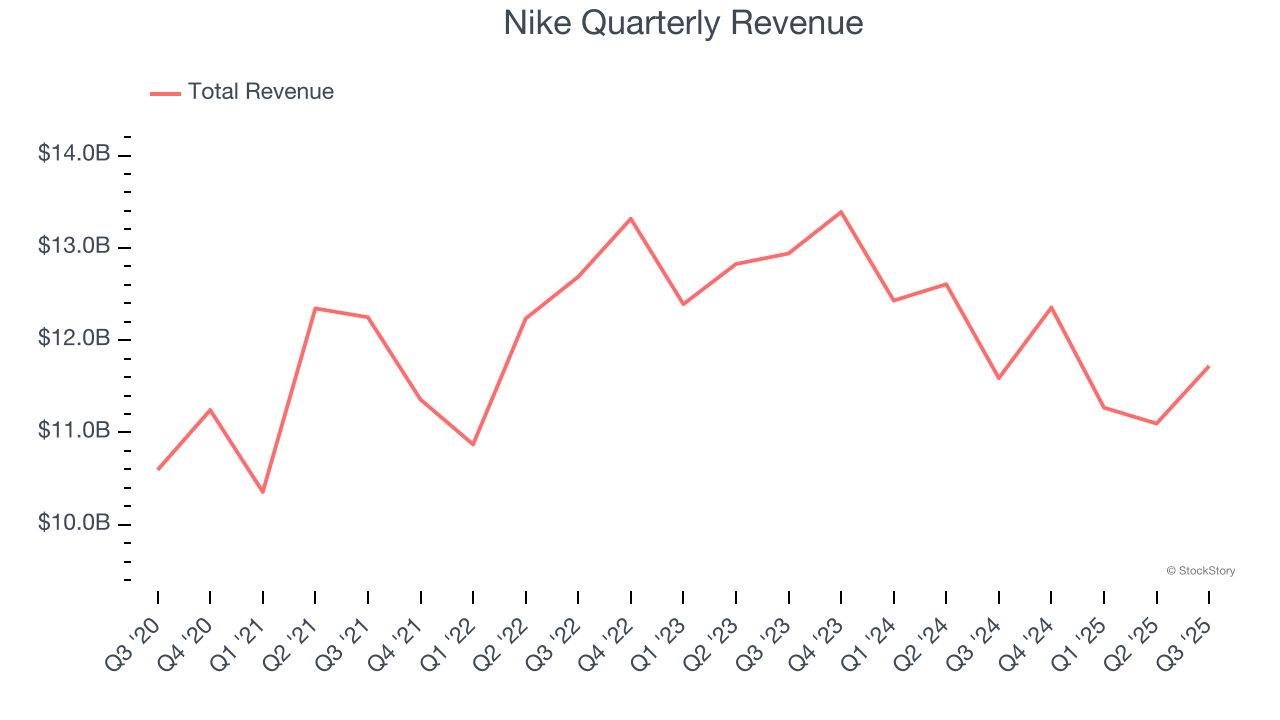
We at StockStory place the most emphasis on long-term growth, but within consumer discretionary, a stretched historical view may miss a company riding a successful new product or trend. Nike’s performance shows it grew in the past but relinquished its gains over the last two years, as its revenue fell by 5% annually. 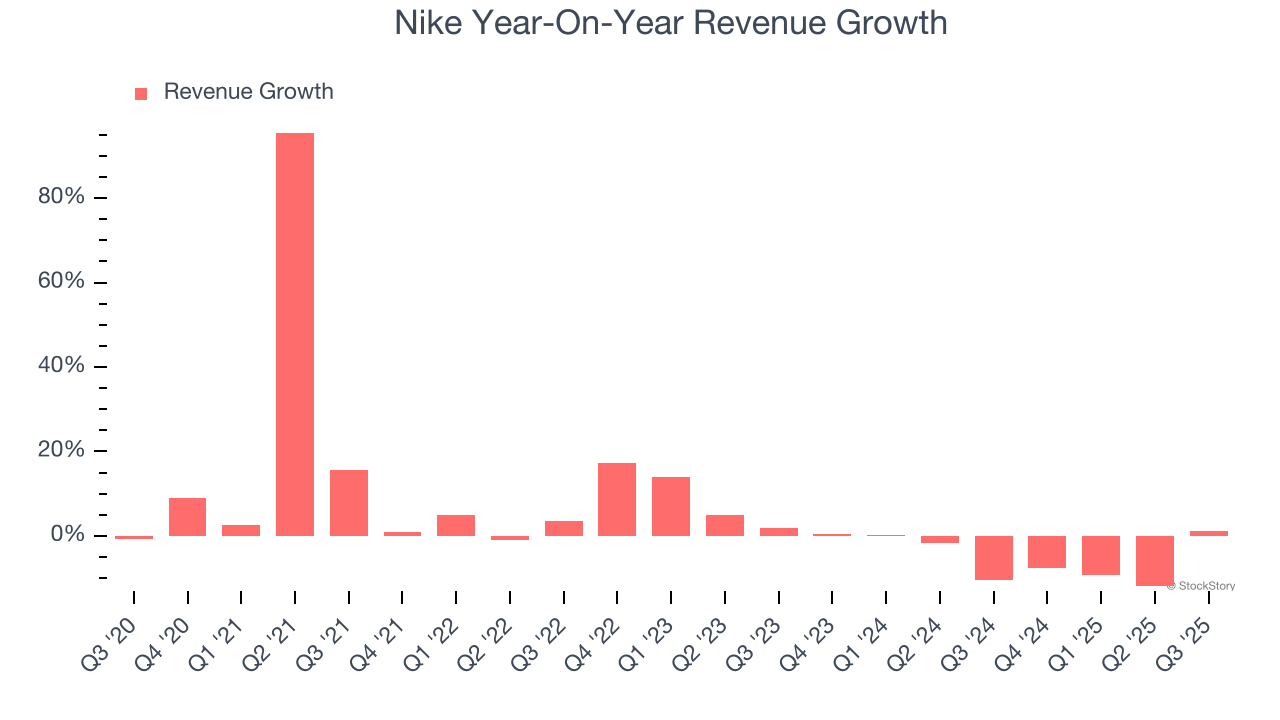
We can dig further into the company’s sales dynamics by analyzing its constant currency revenue, which excludes currency movements that are outside their control and not indicative of demand. Over the last two years, its constant currency sales averaged 4.8% year-on-year declines. Because this number aligns with its normal revenue growth, we can see that Nike has properly hedged its foreign currency exposure. 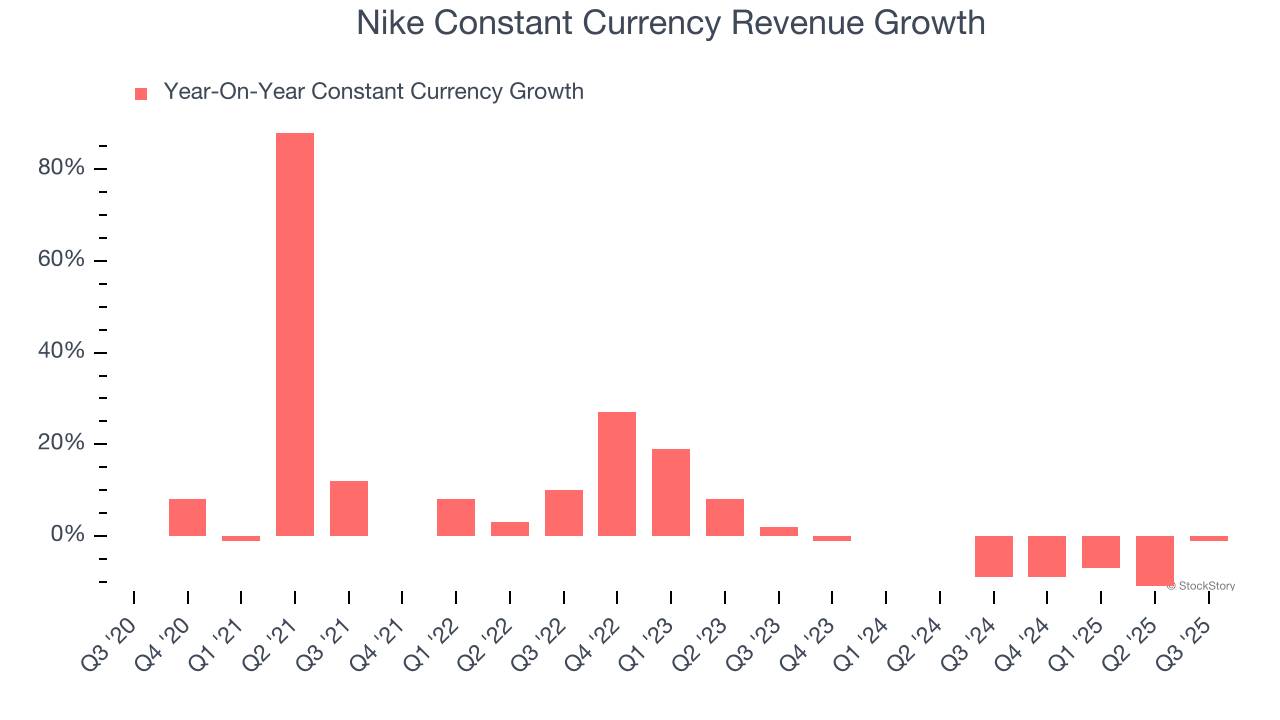
This quarter, Nike reported modest year-on-year revenue growth of 1.1% but beat Wall Street’s estimates by 6.5%.
Looking ahead, sell-side analysts expect revenue to remain flat over the next 12 months. Although this projection implies its newer products and services will spur better top-line performance, it is still below the sector average.
Unless you’ve been living under a rock, it should be obvious by now that generative AI is going to have a huge impact on how large corporations do business. While Nvidia and AMD are trading close to all-time highs, we prefer a lesser-known (but still profitable) stock benefiting from the rise of AI. Click here to access our free report one of our favorites growth stories.
Operating Margin
Operating margin is an important measure of profitability as it shows the portion of revenue left after accounting for all core expenses – everything from the cost of goods sold to advertising and wages. It’s also useful for comparing profitability across companies with different levels of debt and tax rates because it excludes interest and taxes.
Nike’s operating margin has shrunk over the last 12 months and averaged 9.7% over the last two years. The company’s profitability was mediocre for a consumer discretionary business and shows it couldn’t pass its higher operating expenses onto its customers.
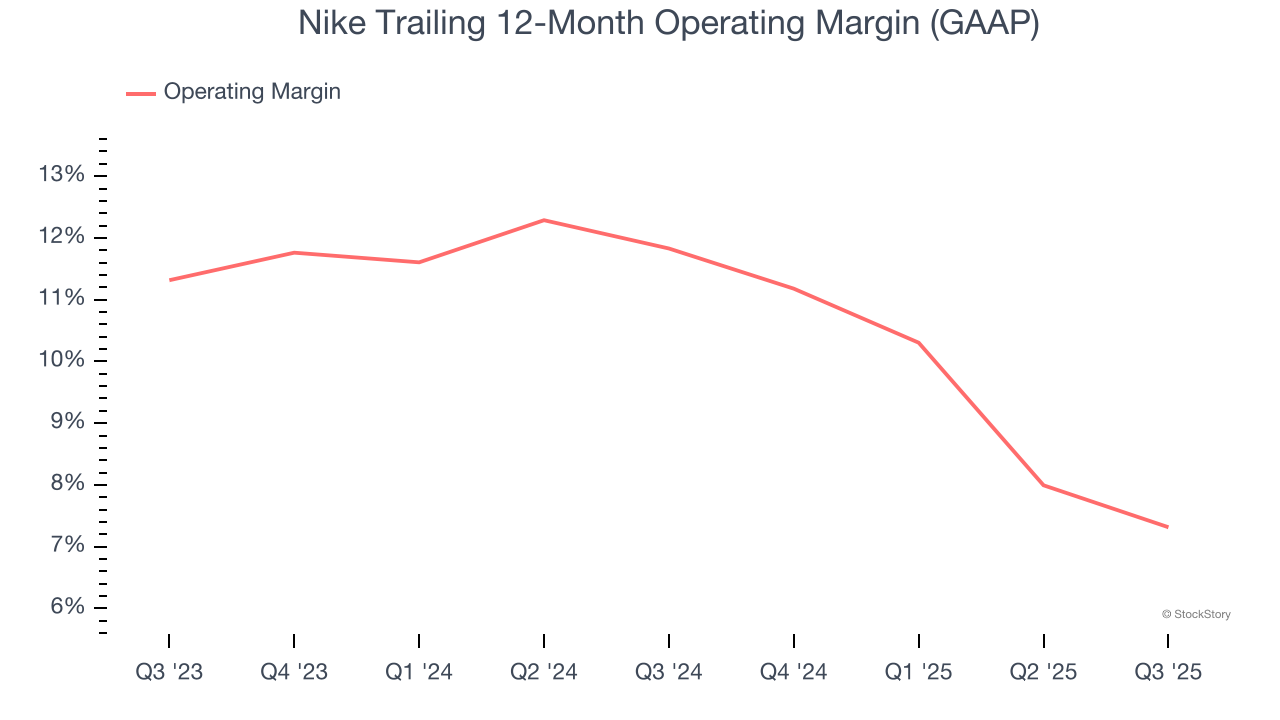
This quarter, Nike generated an operating margin profit margin of 7.7%, down 2.7 percentage points year on year. This contraction shows it was less efficient because its expenses grew faster than its revenue.
Earnings Per Share
Revenue trends explain a company’s historical growth, but the long-term change in earnings per share (EPS) points to the profitability of that growth – for example, a company could inflate its sales through excessive spending on advertising and promotions.
Nike’s unimpressive 3.1% annual EPS growth over the last five years aligns with its revenue performance. This tells us it maintained its per-share profitability as it expanded.
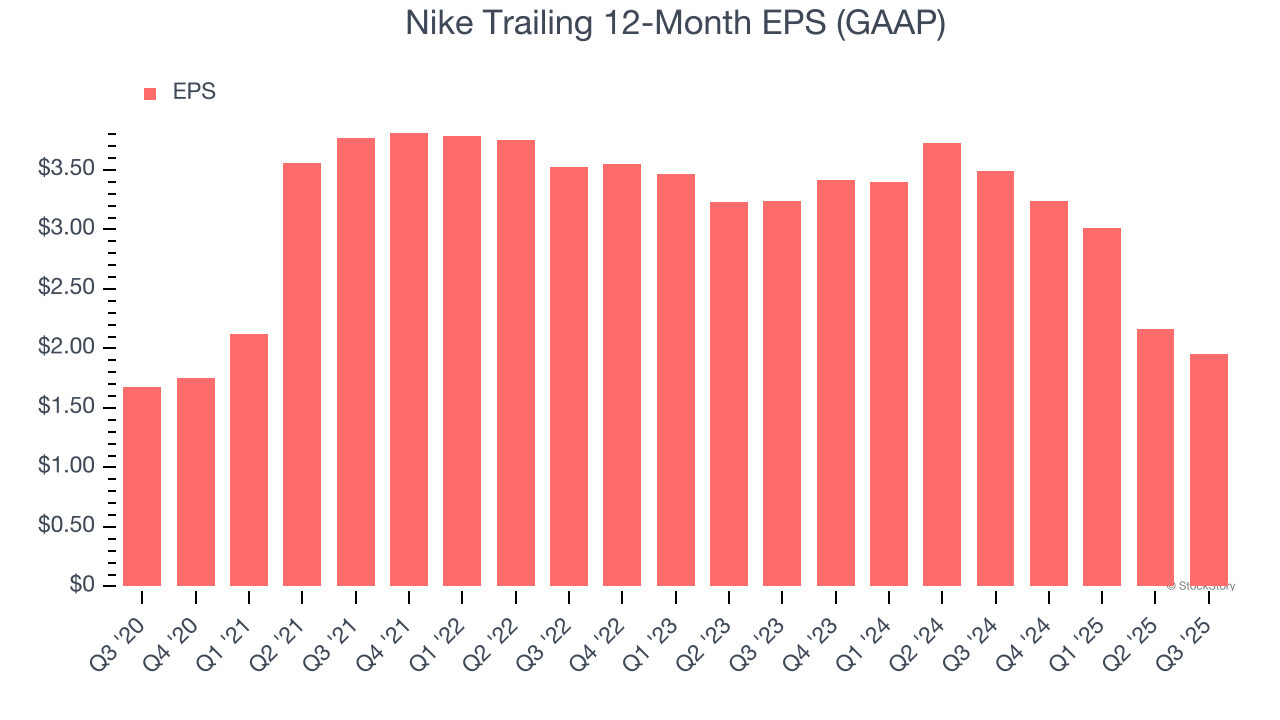
In Q3, Nike reported EPS of $0.49, down from $0.70 in the same quarter last year. Despite falling year on year, this print easily cleared analysts’ estimates. Over the next 12 months, Wall Street expects Nike’s full-year EPS of $1.95 to shrink by 4.5%.
Key Takeaways from Nike’s Q3 Results
We were impressed by how significantly Nike blew past analysts’ constant currency revenue expectations this quarter. We were also glad its EPS outperformed Wall Street’s estimates. Zooming out, we think this quarter featured some important positives with regards to the turnaround story under relatively new CEO Elliott Hill. The stock remained flat at $70.18 immediately after reporting.
Indeed, Nike had a rock-solid quarterly earnings result, but is this stock a good investment here? What happened in the latest quarter matters, but not as much as longer-term business quality and valuation, when deciding whether to invest in this stock. We cover that in our actionable full research report which you can read here, it’s free.






